
H. G. Dietz
http://aggregate.org/hankd/
Department of Electrical and Computer Engineering
Center for Visualization & Virtual Environments
University of Kentucky, Lexington, KY 40506-0046
Original July 10, 2015, Latest Update July 10, 2015
This document should be cited using something like the bibtex entry:
@techreport{foursee20150710,
author={Henry Gordon Dietz},
title={{FourSee TDCI Multi-Camera}},
month={July},
year={2015},
institution={University of Kentucky},
howpublished={Aggregate.Org online technical report},
URL={http://aggregate.org/DIT/FourSee/}
}
As part of our work in Time Domain Continuous Imaging (TDCI), we have created a new type of 3D-printed multi-camera in which multiple cameras photograph the image projected by a single lens. The single taking lens, here a Rodenstock Rogonar-S 135mm f/4.5 enlarger lens, defines the point of view for all the cameras so that there is no parallax error (there is a simple tilt to correct for each camera). The component cameras, four Canon PowerShot N, are each capable of up to 240FPS high-speed video; by coordinating them to capture with various framerates and exposure settings, a composite TDCI stream approximating 480FPS with high dynamic range can be captured. The coordination is implemented by custom code placed in the cameras using the Canon Hack Development Kit (CHDK). Shutter triggering is implemented by either the momentary or latching shutter button, which simply controls application of a 5V supply to the PowerShot N USB inputs to create a sync signal that is detected by the CHDK code.
More information, including the complete hardware design, software, and instructions, will be posted here once the prototype is fully operational. Currently, it is capable of capturing streams, but the CHDK software for control is not stable. In particular, there are synchroniztaion issues still being resolved.
This work is supported in part under NSF Award #1422811, CSR: Small: Computational Support for Time Domain Continuous Imaging.
All the following photos were taken by Professor Hank Dietz and may be freely used for non-commercial purposes involving the TDCI research being conducted at the University of Kentucky. They were shot July 10, 2015... and it was raining heavily, so there are some water droplets on the camera. All images are given here as 6MP JPEGs, edited primarily to make any visible serial numbers unreadable.
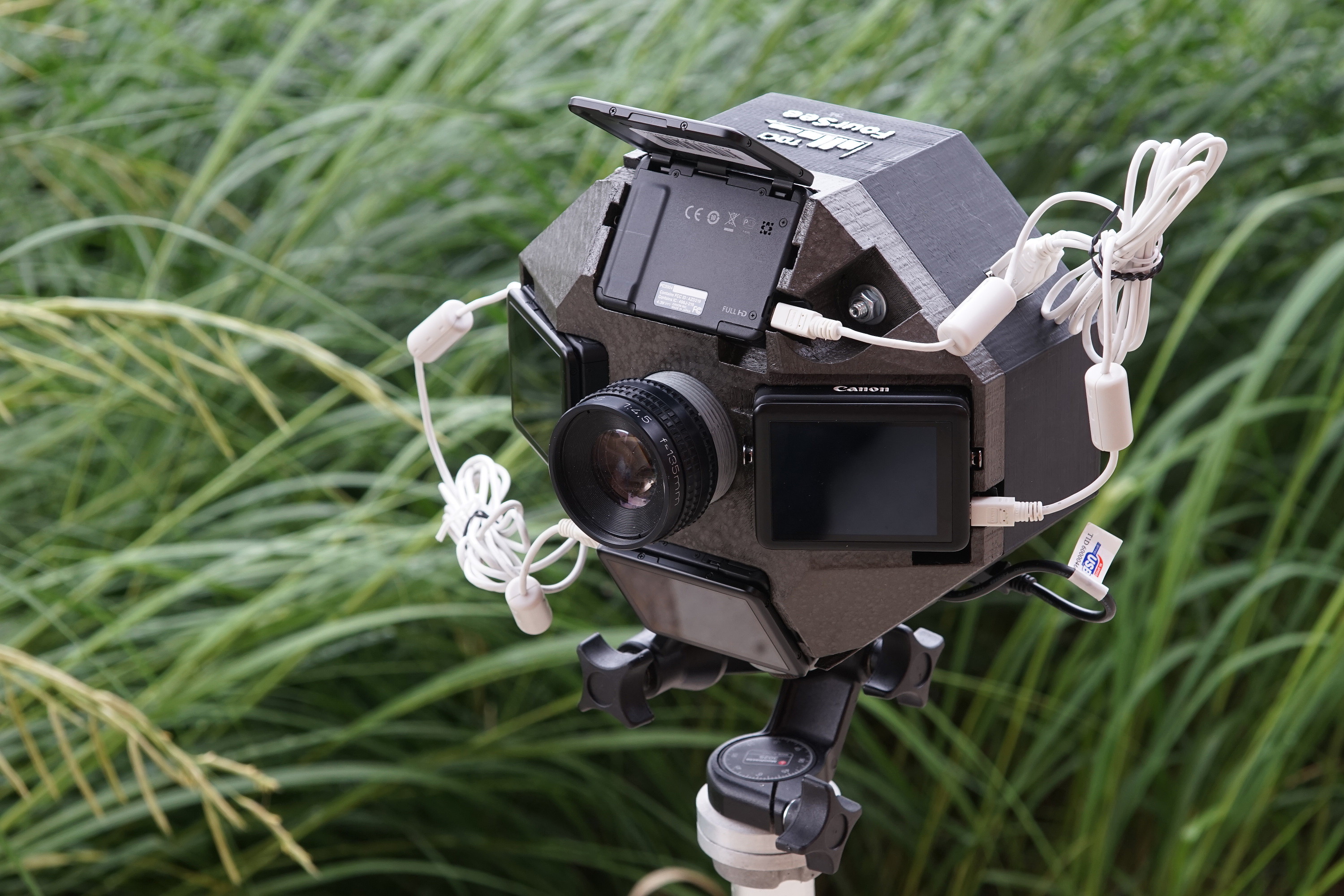 FourSee front with LCD tilted up as viewfinder
FourSee front with LCD tilted up as viewfinder
 FourSee front with LCD tilted up as viewfinder
FourSee front with LCD tilted up as viewfinder
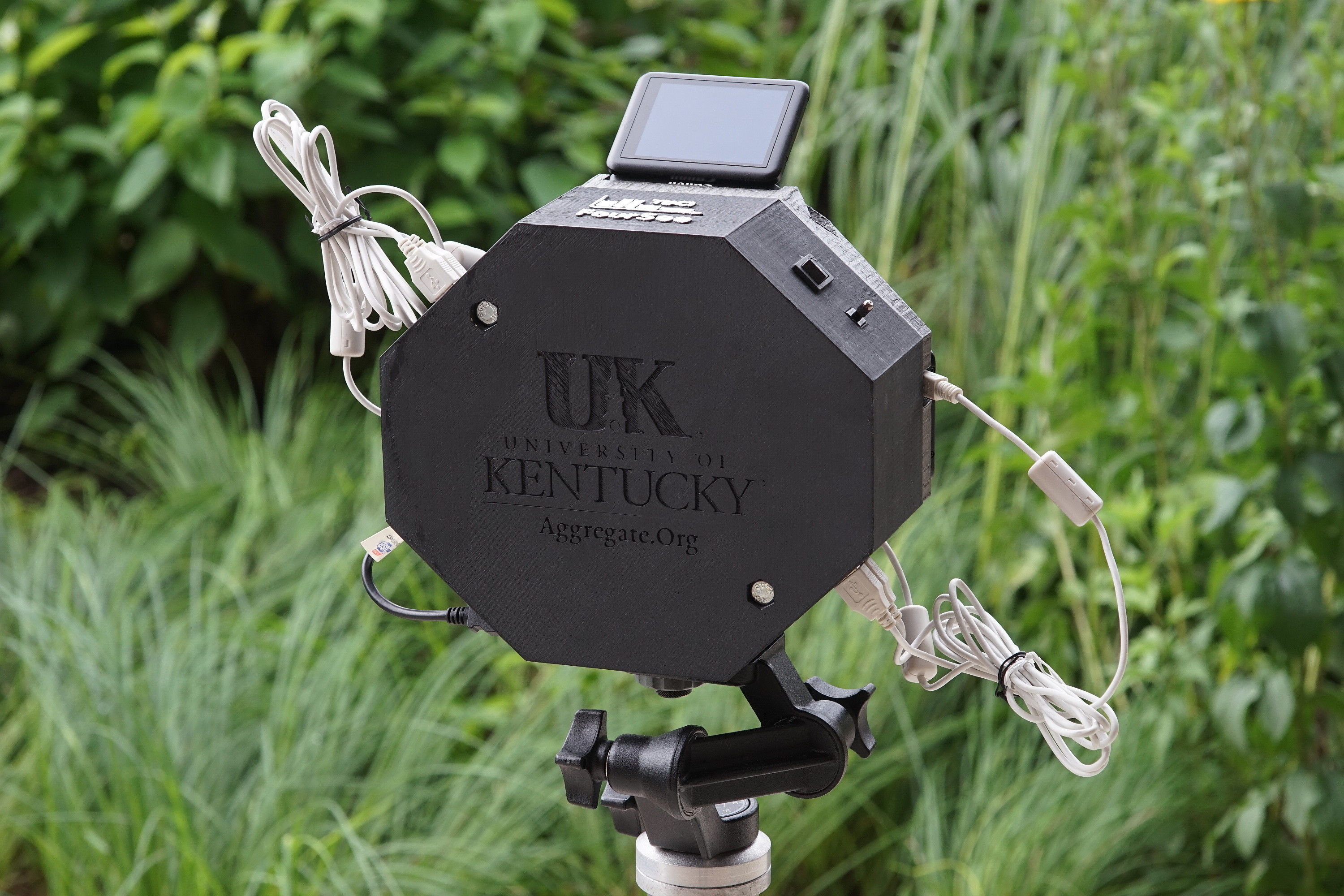 FourSee back with LCD tilted up as viewfinder
FourSee back with LCD tilted up as viewfinder
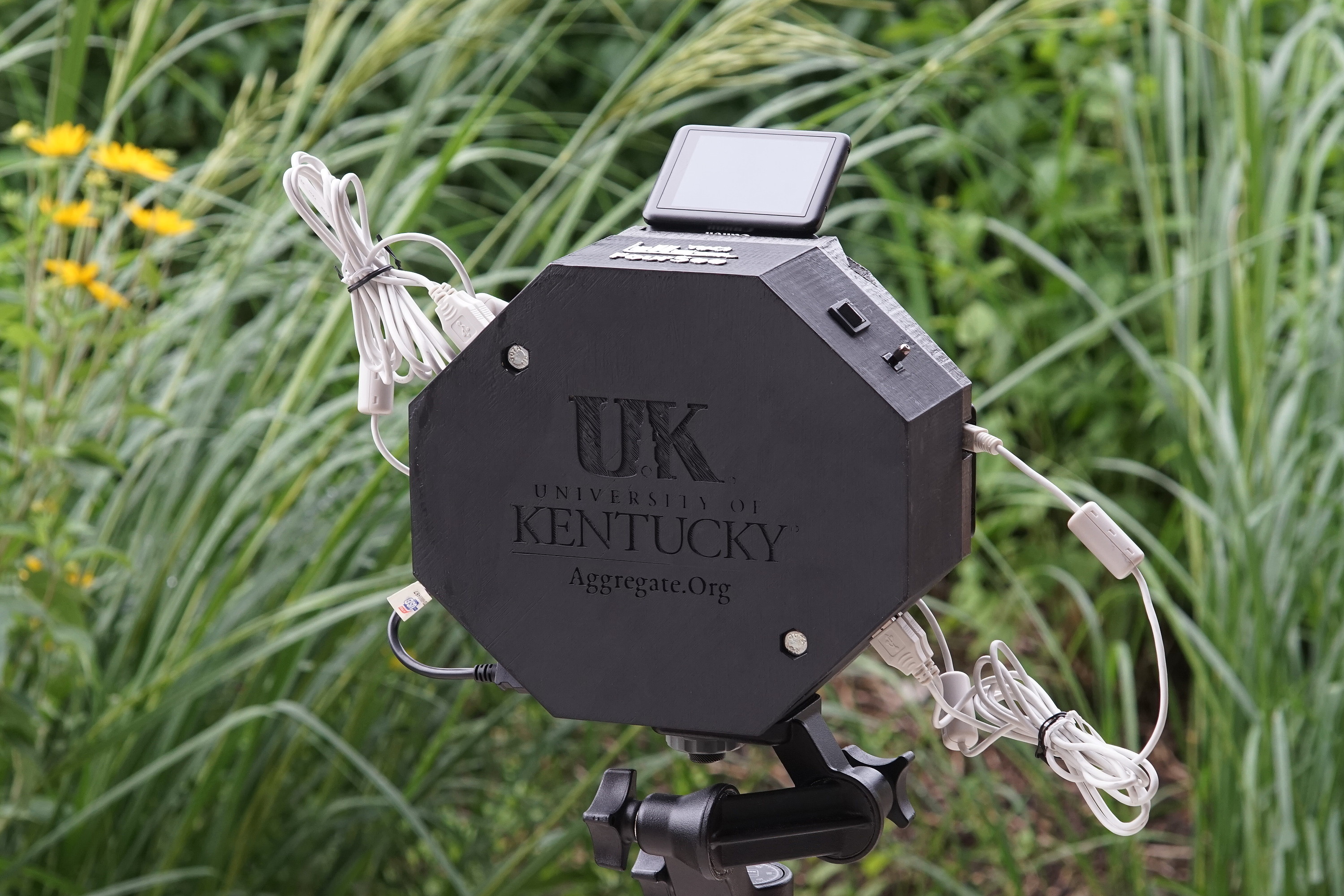 FourSee back with LCD tilted up as viewfinder
FourSee back with LCD tilted up as viewfinder
 FourSee side view with LCD tilted up as viewfinder
FourSee side view with LCD tilted up as viewfinder
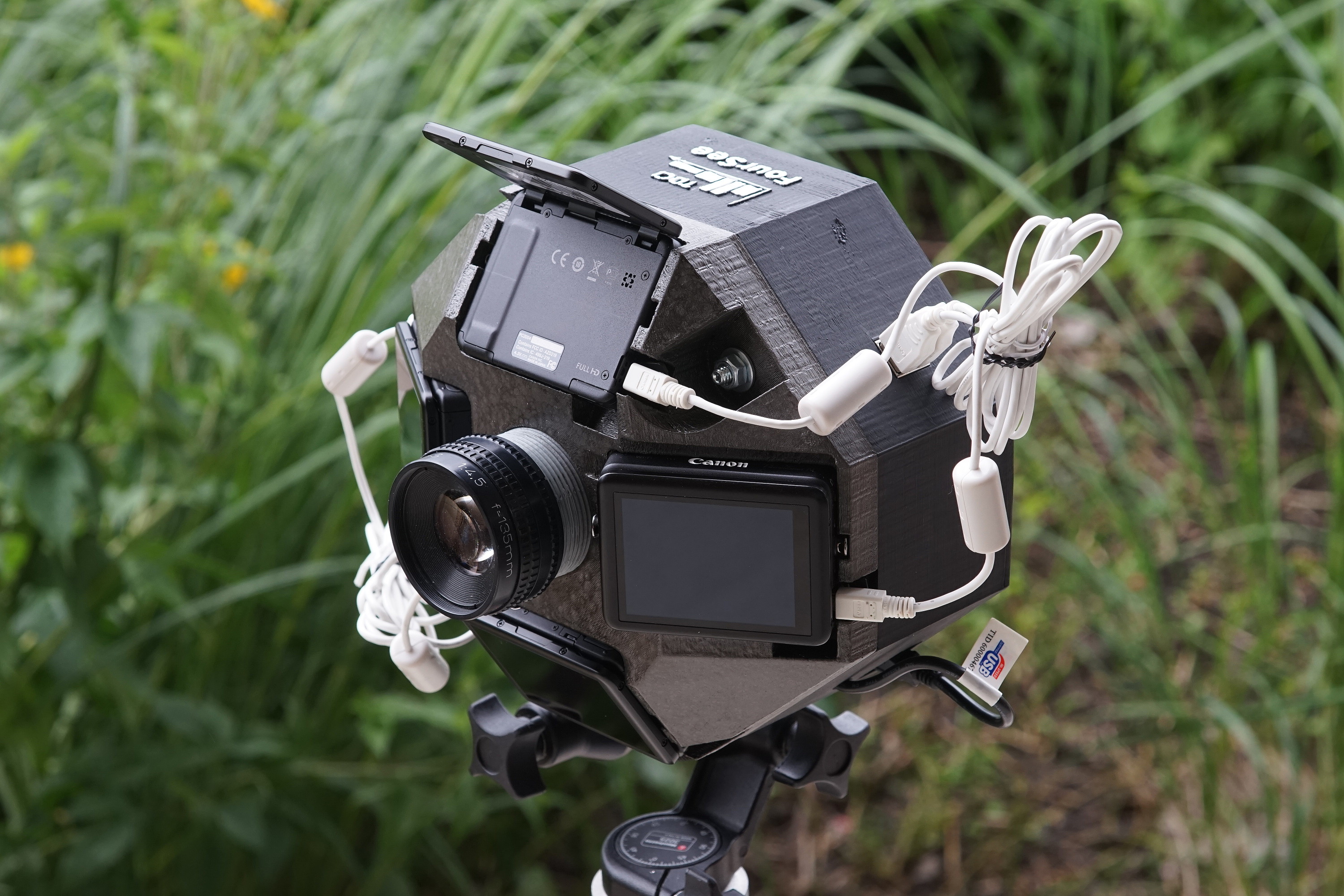 FourSee front with LCD tilted up as viewfinder
FourSee front with LCD tilted up as viewfinder
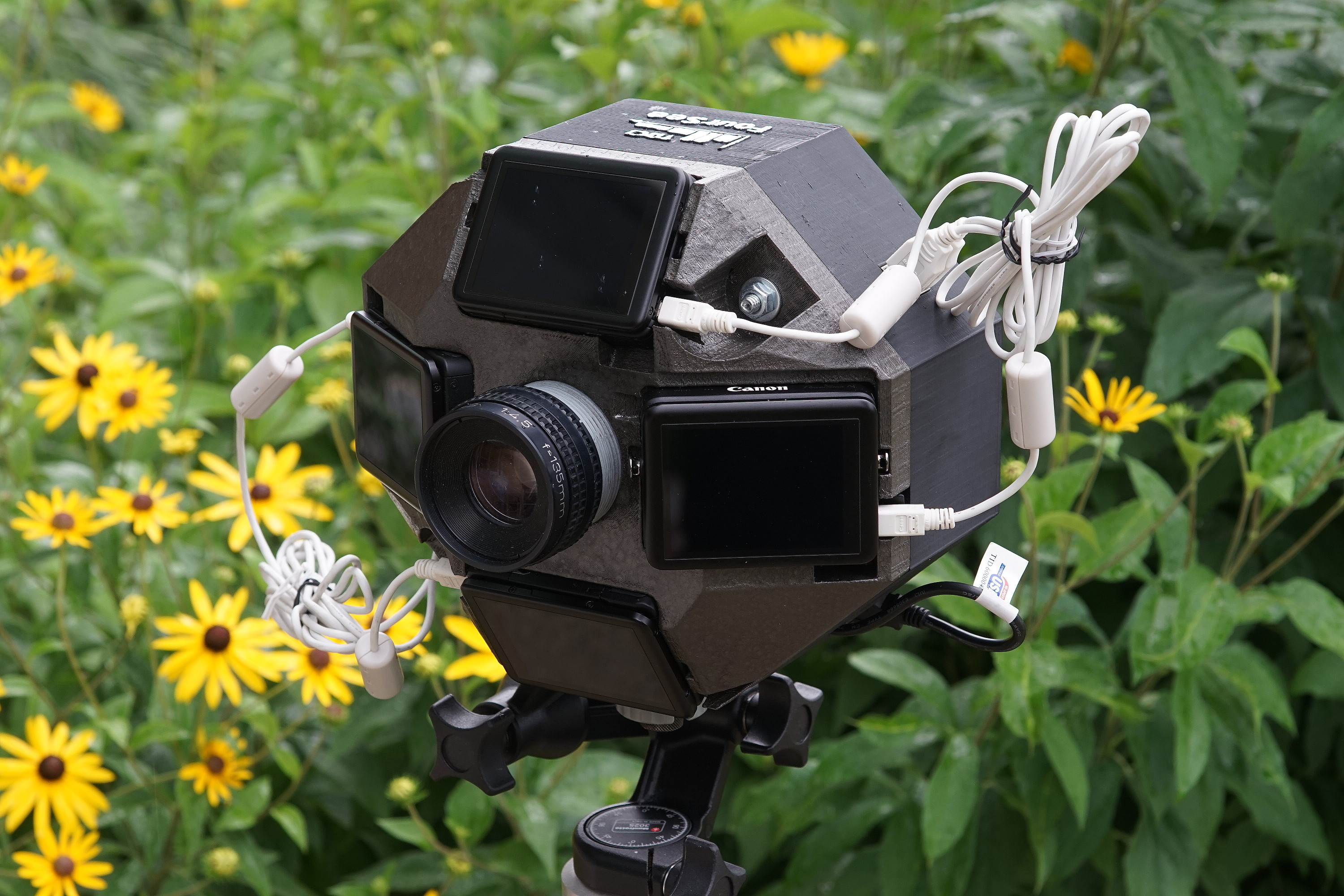 FourSee front with LCD in carrying position
FourSee front with LCD in carrying position
 FourSee back with LCD tilted up as viewfinder
FourSee back with LCD tilted up as viewfinder
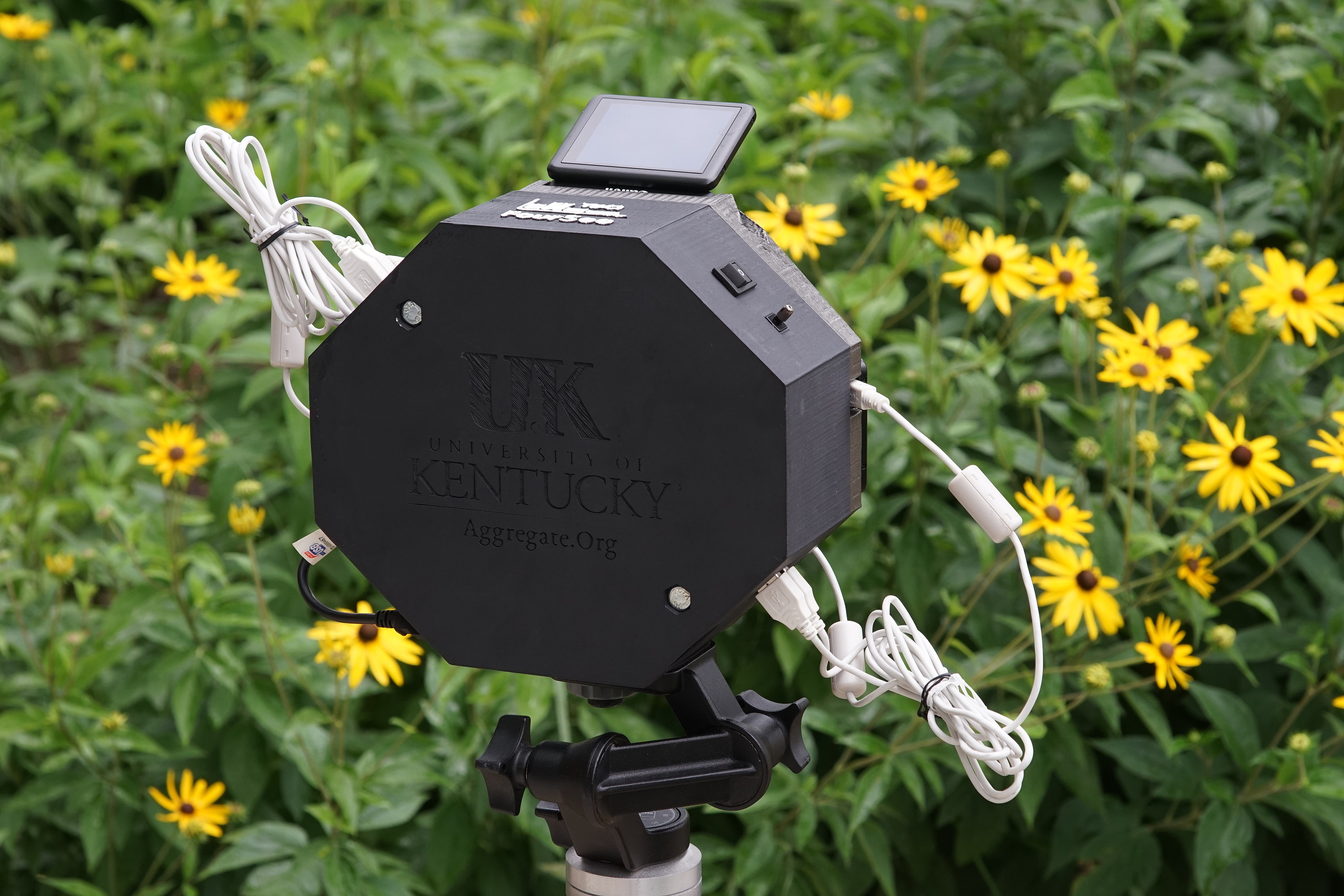 FourSee back with LCD tilted up as viewfinder
FourSee back with LCD tilted up as viewfinder
 Top of FourSee from rear, showing viewfinder and shutter buttons
Top of FourSee from rear, showing viewfinder and shutter buttons
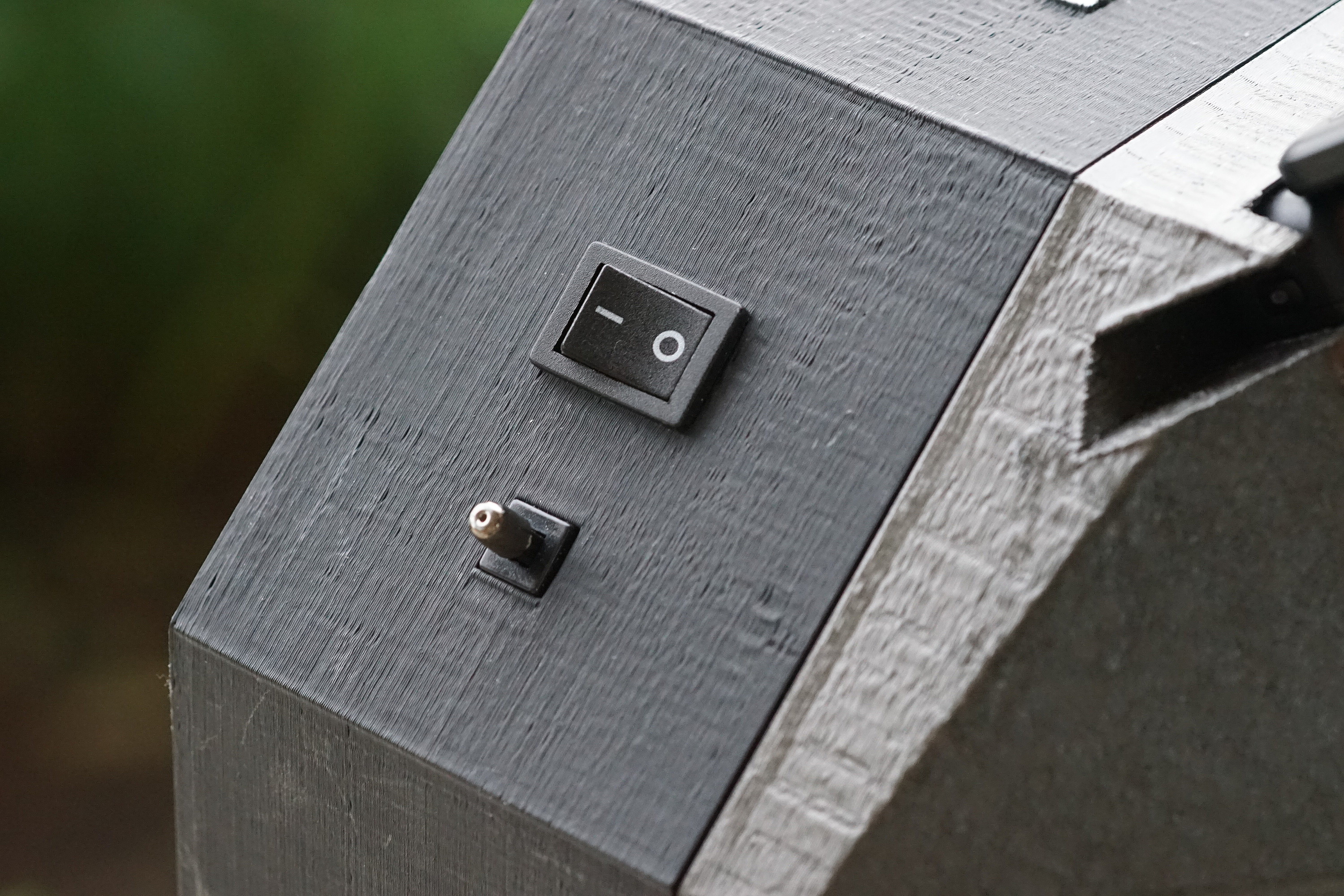 FourSee latching and momentary shutter buttons
FourSee latching and momentary shutter buttons
 Side of FourSee showing 5V rechargeable USB battery
Side of FourSee showing 5V rechargeable USB battery
 Back of FourSee showing UK Aggregate.Org logos
Back of FourSee showing UK Aggregate.Org logos
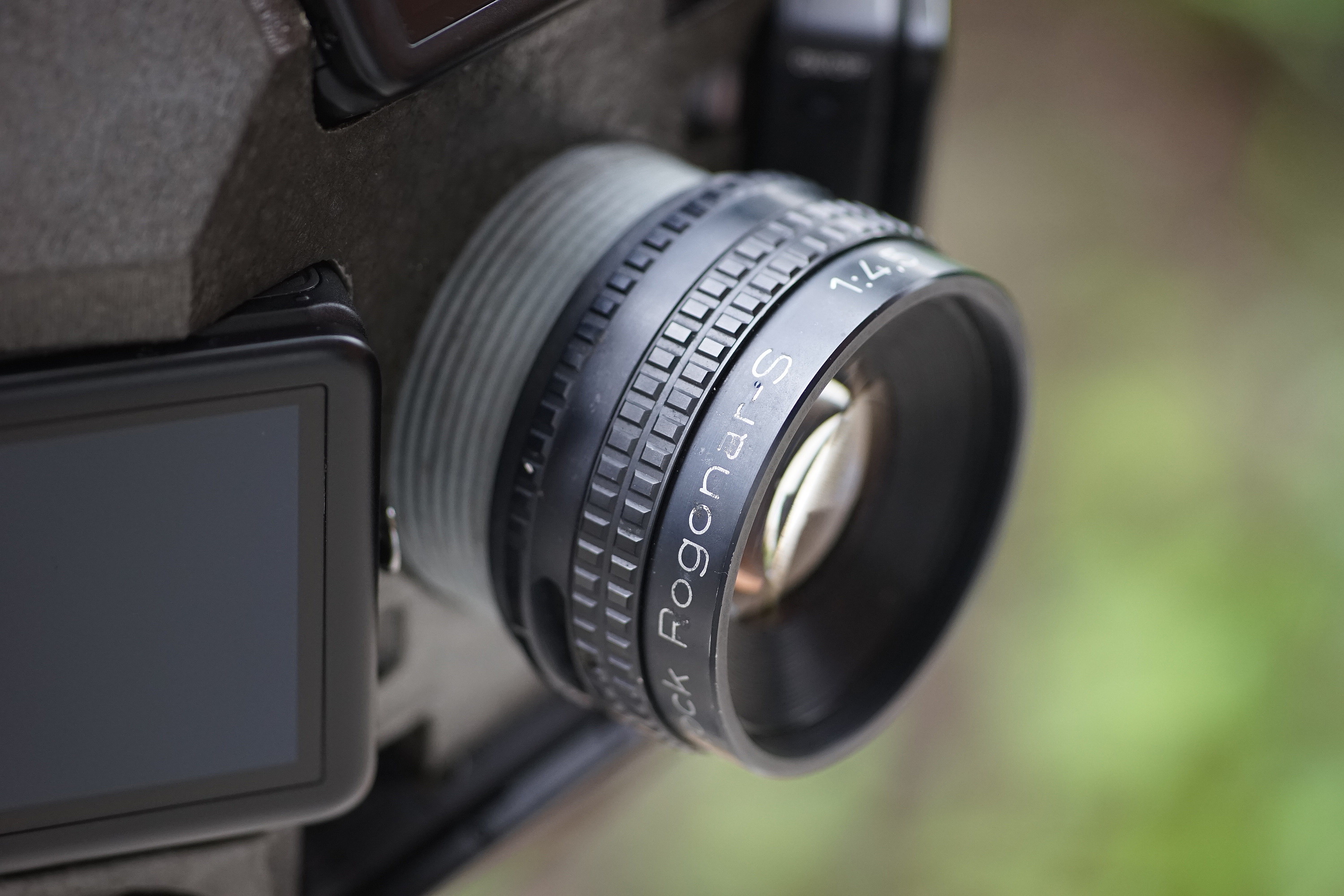 Front of FourSee showing Rodenstock taking lens
Front of FourSee showing Rodenstock taking lens
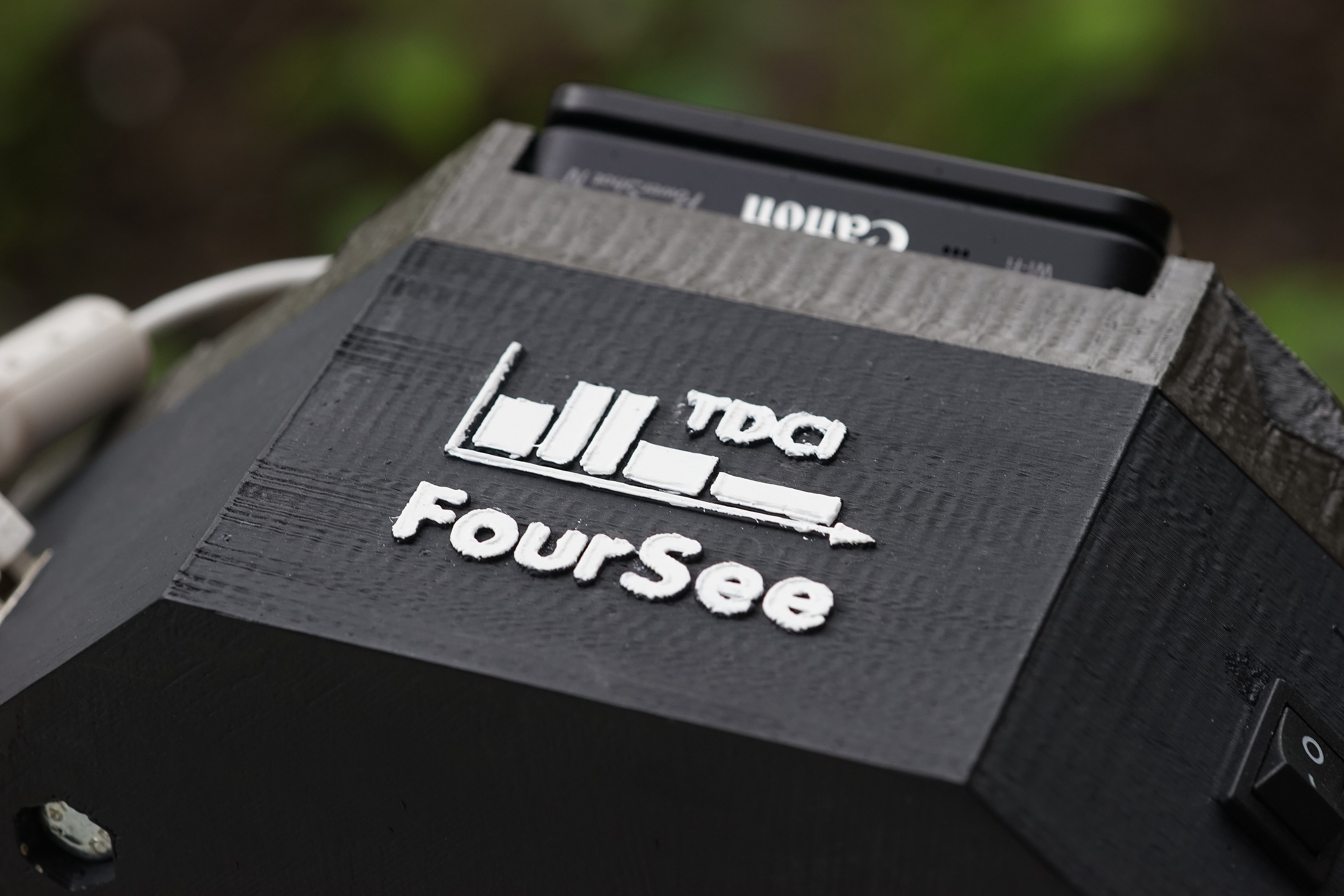 Top of FourSee showing TDCI logo
Top of FourSee showing TDCI logo
 FourSee latching and momentary shutter buttons
FourSee latching and momentary shutter buttons
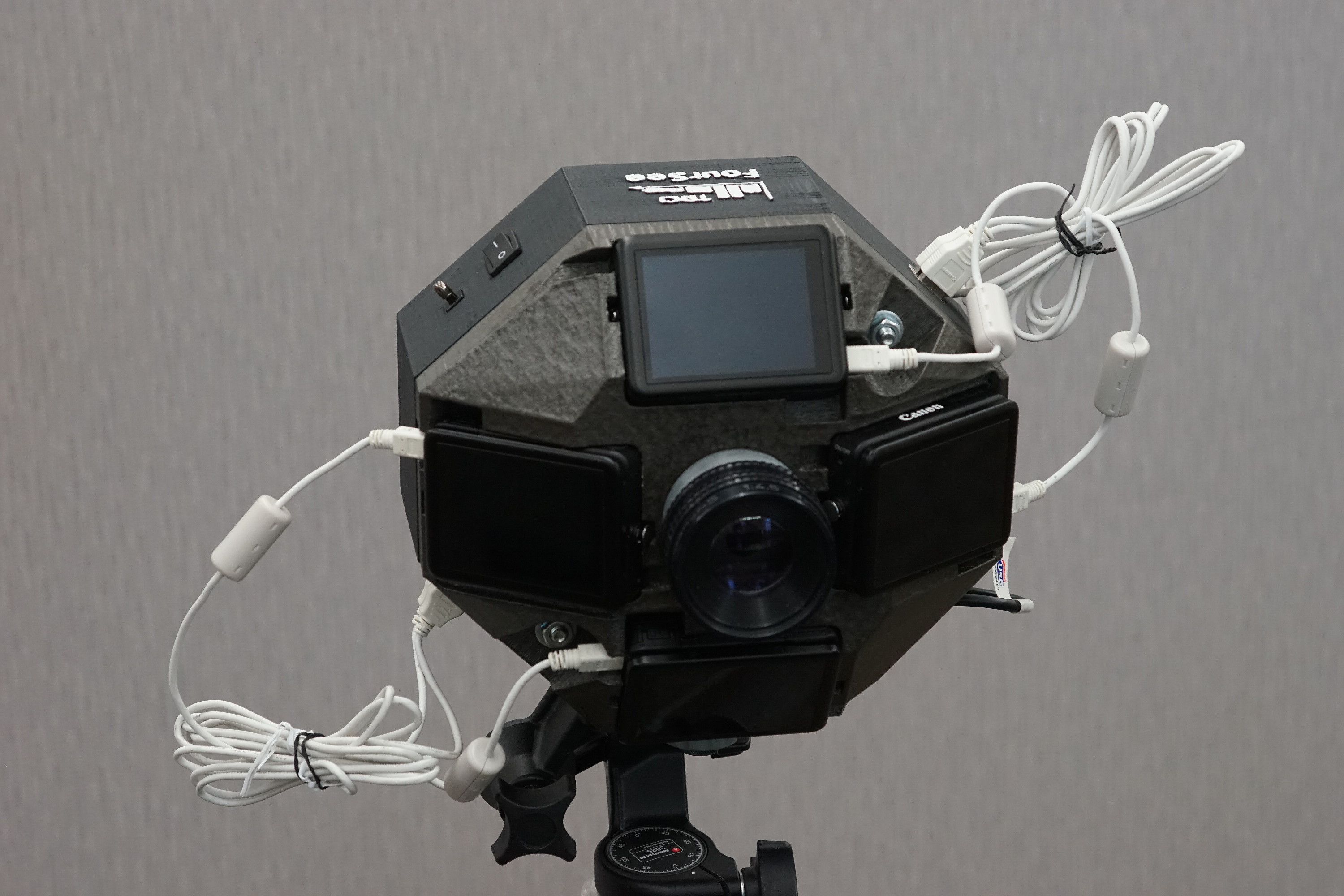 Front of FourSee with LCD in carrying position
Front of FourSee with LCD in carrying position
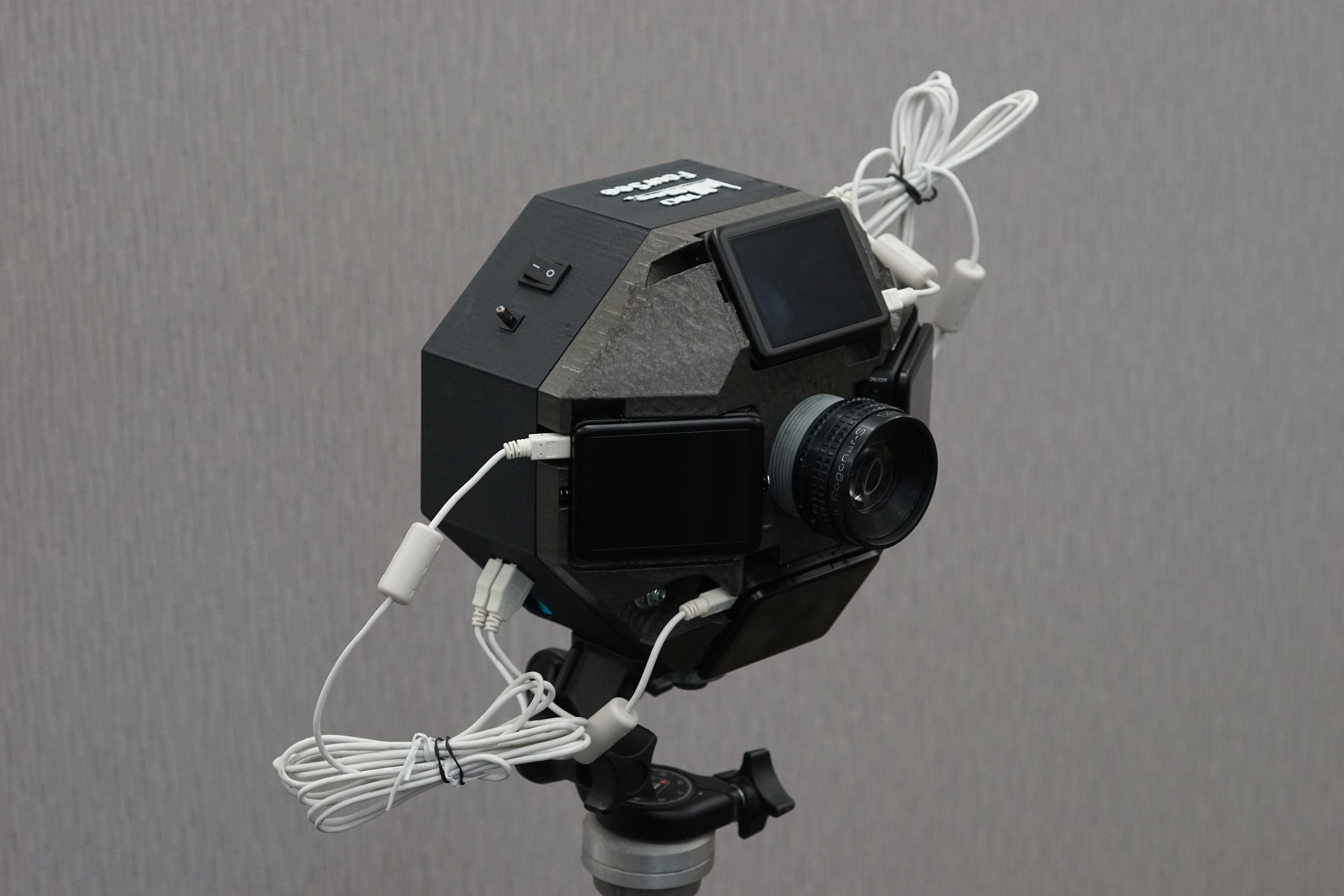 Front of FourSee with LCD in carrying position
Front of FourSee with LCD in carrying position
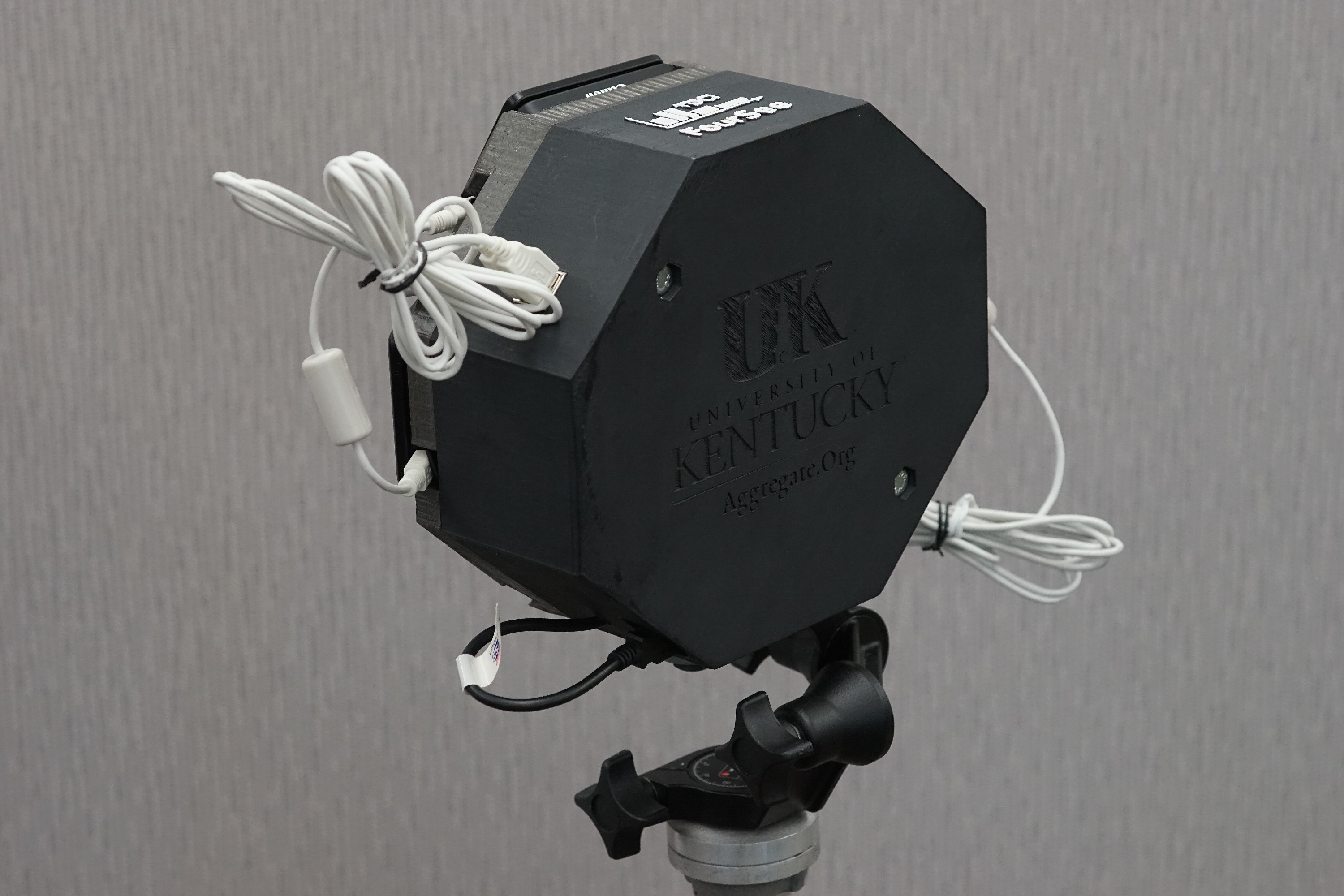 Back of FourSee with LCD in carrying position
Back of FourSee with LCD in carrying position
Here's an STL model of the 3D-printed frame of FourSee. It looks something like this:
There are actually three 3D-printed parts: the back, front plate, and lens focus thread mount (which is an interchangeable part specific to the particular lens being used). All three parts were printed using a MakerGear M2 to extrude PLA with a 0.25mm layer height. The back and front plate were printed in black, then painted to ensure no "pinholes" that could leak light. The back was painted with flat black latex paint, the front was painted with a hammered bronze spray paint on the outside. The threaded lens focus mount was printed in silver and left unpainted.
In addition to the 3D-printed parts, two bolts hold the front and back together (a printed ridge ensures alignment and a light seal between the two). A 1/4-20 nut is welded into a printed cavity in the bottom of the back to make the tripod socket. The shutter buttons and USB connectors are welded-into printed holes fitting them, with wire-wrap internal connections between the components. The projection screen on the inside is simply a piece of paper. The first prototype used high-quality inkjet photo paper, but showed reflective hot spots... which ordinary paper does not show. The paper used has a fine matt finish and (unlike many "high brightness" papers) does not significantly fluoresce.